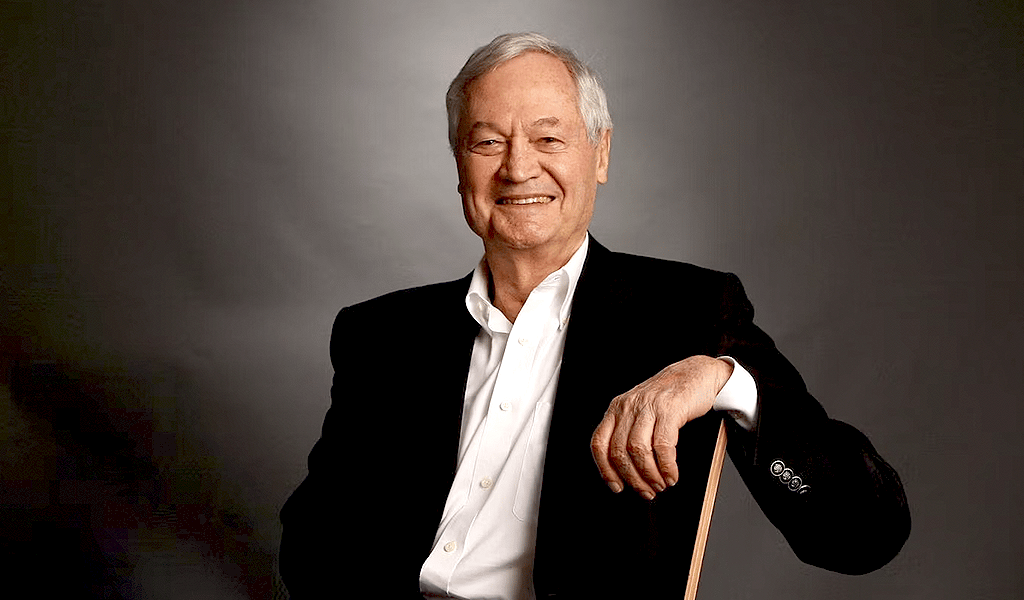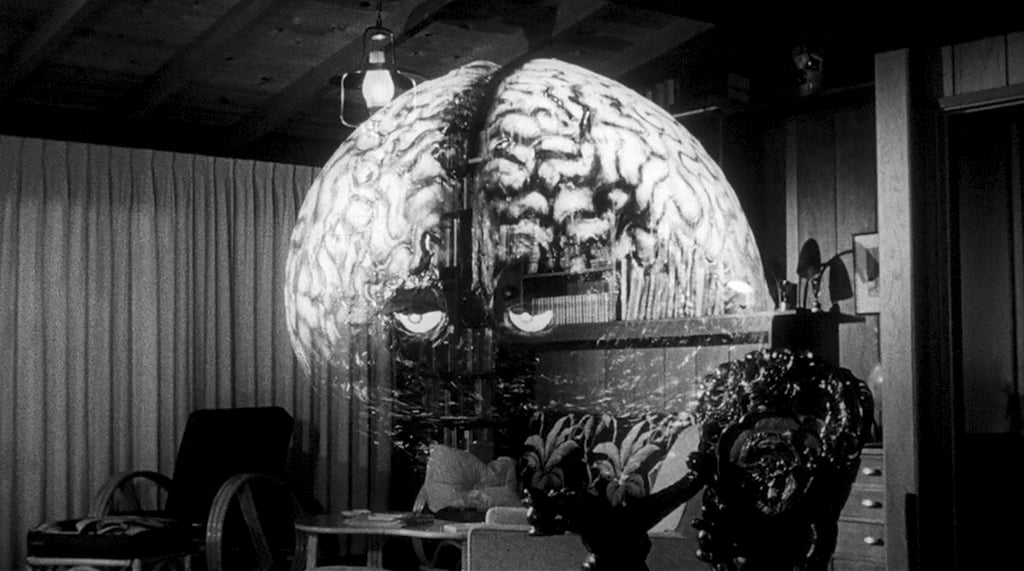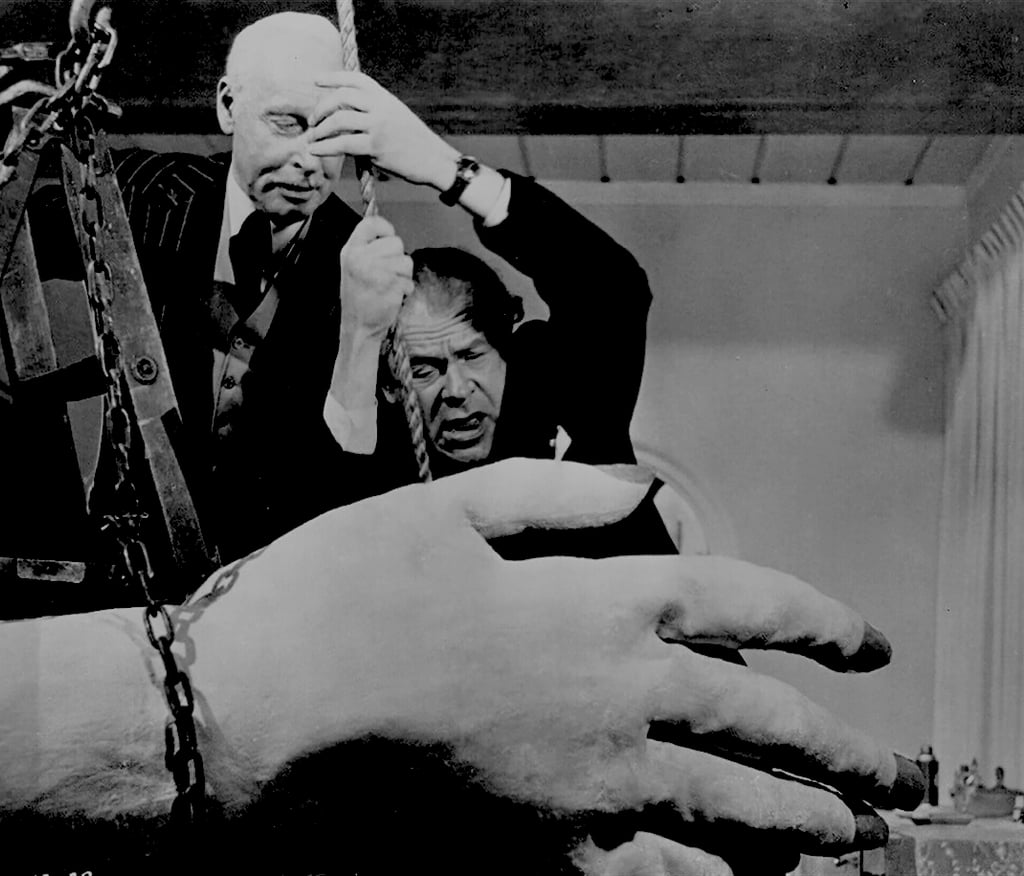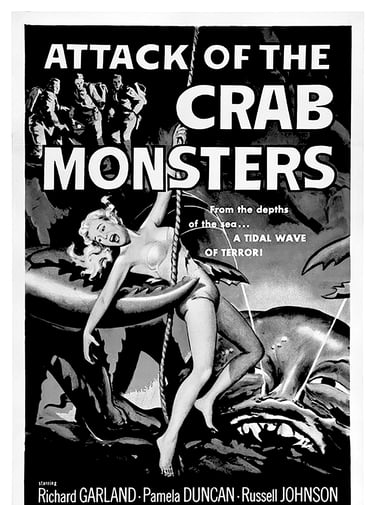Do you love dark cinema like we do?
Shudders and Shadows Editorial
Webmaster Gary Svehla comments on several current topics!
HORROR/SCIENCE FICTIONFILM NOIR/DARK CINEMA
written by Gary Svehla
8/12/20259 min read


It causes a frenzy! Physical media is slowly being transformed into an expensive niche market, where DVDs, Blu-rays, and 4k discs are selling for 40 dollars apiece and often higher. More and more people are streaming movies, and fewer people are purchasing physical media, so to make a profit, manufacturers must charge a higher price for fewer copies sold. More people are embracing the mentality of the collector and buying multiple editions of movies as they are repackaged and perhaps remastered every few years, hoping for superior pressings. On the other hand, streamers sometimes acknowledge inferior pressings, but they hope to avoid buying DVD players and instead speak the name of the movie they want to see into their remotes. The only surprise will be the rental fee if it is not available for free.
Honestly, the streaming copies might be of slightly inferior quality, but without a side-by-side comparison, they are mostly more than good enough to watch. Collectors want to hold a physical disc they own and can watch whenever they desire. They can proudly display their collection and share it with others. But these are entirely two different types of people: the first loves the movie and sees it in any available copy, and the second covets the actual film in physical media, owning it, and often resembling the audiophile, placing the possession of the best pressing ahead of simply seeing the movie. And while such people will pay the highest prices for a movie, physical media will never die! But expect to pay what is now considered an outrageous price for physical media as its core audience shrinks. Criterion discs at $40 will soon seem a bargain! It all started with the Blu-ray and 4k disc of Invaders from Mars and most movies that Flicker Ally releases.
Since the pandemic, the slow death of the movie theater has crept along while the growth of home theater has continued. Indiewire reported in a poll that just 34 percent of people desire to see a movie in a public theater. That means nearly two-thirds are willing to stream the movie at home. First, public movie theaters have inherent flaws: higher ticket prices, especially for IMAX and DOLBY theaters. They are very public, so they can be the location of mass shootings. The concessions stand prices are getting out of hand and can be problematic for a family. Let’s not mention getting your seat kicked, cell phones being used during the movie, and people talking during the feature presentation. But sometimes, the giant screen and the best sound are always available.
The rise of a home theater—whether it has a 120-inch screen and projection, a 100-inch television, or simply a 5.1 surround 65-inch monitor with Atmos—brings the movie experience home. There is little need to go to one of the nearby multiplexes. But home theater also lacks the communal spirit of a large crowd seeing a movie together, experiencing sudden jolts together, laughing together, or applauding as one at the end. You generally get to see a film first at the theaters and patiently wait several weeks to see the same picture at home (although more and more releases are being offered to stream immediately, often by-passing theaters). But you never have to wait in long lines to see a movie in the comfort of your home or watch a half hour of commercials. And you have the luxury of taking pee breaks.
This magazine is not long for this world. People younger than, say, 35 often do not believe in buying magazines when they can read online blogs or free websites with the same information. To them, the past is a few years ago, and nostalgia is an emotion only their parents hold. Collectors are in a hobby primarily for financial rewards and seldom for the inner, intrinsic value. First, physical copies of magazines and books are fading because younger people have less disposable cash and live in smaller spaces, unlike their parents. So they do not have room for collections. The Baby Boomers’ love of the past is no longer held by most of the newer generations (who often complain about watching a black-and-white movie). If magazines are to survive, they must convert to a digital format and sell for next to nothing. Newsstands are a relic of the past. I realize magazines such as Classics of the Horror Film, The Dark Side, and Little Shoppe of Horrors are doing just fine financially. Still, even Little Shoppe of Horrors has an already-published expiration date. With higher printing costs, higher paper costs, and an ever-diminishing core of buyers, niche magazines will survive only temporarily.
How will the horror community change in the 2020s-2040s, compared to the boomer-driven decade of the 1950s-1970s? First, as we said, forget about the nostalgia-driven decades of the past. Horror films will become a disposable commodity; mainly, the current year’s horror films will matter. What’s available in 2024 will matter, as 2023 is past and ready to be forgotten. A few older films will be remembered, directly associated with current films or directors. However, the focus will be on recent films, not past classics. The emphasis will be on watching the film once or a few times and not caring about owning the physical disc (if they even exist). Streaming will be more than good enough. Last year’s movies will be ancient and outdated, while current films will be the ones that matter. Thirsting for knowledge of the cinema past will gradually disappear, and Lon Chaney shall die! Magazines and niche horror books will slowly disappear as only the current era matters. Conventions will price themselves out of existence, and the love of horror films past will disappear. Relatively expensive toys and movie posters will languish on abandoned shelves as they lose value due to the boomers' death and subsequent generations' disinterest. The horror film genre may not survive or diminish in power. Still, hopefully, it will prosper as long as date nights exist and going to the movies matters for young people (if theaters do not price themselves out of existence!). Besides, horror is “cool.”
Let me give you a view of the past and future generations. We boomers waited patiently for the local horror/creature feature television program to show a much-desired movie. And then it might not be available for a year or two. Besides owning condensations of Super 8mm or 16mm prints, there were no entire movies available, as videotape and plastic discs were not yet available. We were imaginative youngsters, willing to go to neighborhood theaters to see a rash of “A” or “B” horror and science fiction movies produced during the 1950s and early 1960s. Mostly, those primitive “B” pictures grabbed our imagination and attention, even with men in monster suits (It, The Terror from Beyond Space), transparent special effects (The Attack of the 50-Ft. Woman, The Brain from Planet Arous), wires showing (War of the Worlds), miniature work (The Blob), and kitchen utensil flying saucers (Plan 9 From Outer Space). But you know what? Such discrepancies only fueled our inquisitive minds to suspend disbelief for ninety minutes and not bother about the zippers, fake masks, and the less-than-realistic props and costuming. Our imaginations ran wild, and we accepted it all. I pity younger generations who grew up on CGI and superior special effects. Disliking non-color movies and laughing outwardly (not all, but most!) at primitive special effects (yes, even Ray Harryhausen’s special effects may seem jerky and quaint, hardly realistic) in outrageous plots. But when you add 100-million-dollar productions, CGI, a design staged and costumed perfectly, these young people can not be expected to look back on 1950s productions with reverence and love when they were raised on expensive “A” productions. Besides, to the younger generations, old means non-essential and quickly forgotten. The 1950s had heart and soul, while the current era has sterile perfection. And Boomers hardly need perfection.
We must add two cents to all the reactions to director/producer Roger Corman’s recent passing at age 98. Known affectionately as the King of the Bs, Roger Corman was more noteworthy than that. I had two personal encounters with Corman over the years, and they illustrate what an exceptional human being he was, and he acted so humbly.
When Chiller Theatre was simply a horror convention all those years ago, our convention Fanex used to host a convention suite party on Saturday nights at Chiller to invite the guests who were interested in classic horror and meet them on a more intimate, smaller gathering, offering them free and straightforward food, and perhaps get their contact information to invite them perhaps later to a Fanex. The party was open to one and all! Roger Corman visited one such party to interact with the small crowd of fans. Corman chomped down on a hot dog as he pried fans' minds, asking them who their favorite new directors were, among other questions. Suddenly, Baltimore’s own George Stover entered the party with B actress Debbie Dutch, who immediately saw Roger Corman sitting around and chatting. Dutch immediately yelled, “Mr. Corman, Mr. Corman, do you remember this?” as she kept yelling his name and kicking up her legs in a Rockette style, trying to imitate a scene she performed in a Corman B production. More than slightly embarrassed by the loud proclamation and energetic leg kicks, Roger Corman immediately remembered someplace he had to be. He abruptly exited to the utter shock of all the assembled party-goers. But it was a great time while it lasted, showing Corman could be a regular guy and valued the opinions of today’s fans.
Then, in 2000, Roger Corman was a guest at the Fanex-hosted convention Classic Filmfest, and he was scheduled to arrive at the hotel sometime around one a.m. to be attended to by the late Barry Murphy. Except he never came! Storm warnings diverted his plane to another airport in another out-of-state city, and the fear was that he would never arrive at the convention and that he and Julie, his wife, might return home immediately. But he phoned the hotel and told us of his predicament. He said not to fret that he would pay to fly into Washington at his own expense and arrive later that night for the convention. Many convention staff waited for his arrival in the middle of the night. Corman was the type of man who went out of his way to pay extra to do the convention. When Roger and Julie finally arrived at the hotel, they were gracious and friendly, masking utter fatigue.
Roger Corman was great with the fans, signing autographs for free and only asking for donations to a favorite charity. Unlike 90 percent of the regular guests, he wasn’t charging $25 to sign a still or lobby card or charge for a personal picture at the time. He was delighted to meet his fans and do whatever he could for them. The only fan who frightened him was a notorious West Coast fan who always gave the guests a stack of stills so they would feel obliged to sign a pile for him. When he was told this fan was coming to his line, it took Corman about one minute to close up shop for the night. Julie Corman was also excellent, encouraging my wife, Susan, to make her no-budget science fiction film, Stella Quasar and the Scrolls of Dadelia, for which Julie even wrote a quote that was printed on the back of the DVD box.
Doing conventions for almost 20 years has taught Sue and me that the bigger the star, the more humble and less money-oriented that star is. Roger and his wife demonstrated that they were not doing our convention for money or notoriety, but were paying back the fans. This was the actual Roger Corman. Few fans have witnessed this aspect of the man, but now is the time to spread the word!
When we think of Val Lewton, James Whale, or Tod Browning, we think of genre icons, but they were involved in merely a handful of movies. When considering the contributions of Roger Corman, we have decades to consider: his early black-and-white movies for American International/Film Group of the 1950s, his color-saturated Edgar Allan Poe movies of the 1960s, his exploitation work of the 1970s, his work as the producer for New World Pictures, including pivotal science fiction work during the decade of the 1970s and beyond, importing classic foreign films to America, directing interesting films during this long period, and discovering incredible talent (whom he offered their first big break) along the way. Corman did nothing less than change genre cinema, creating and fine-tuning the way horror and science fiction were made and distributed. In the genre's long history, he remains one of the iconic movers and shakers. He mainly worked with low-budget productions, and thus, his innovations were relegated to the back shelf, but his contributions cannot be underestimated. At almost 100 years old, who said the good die young?
Editorial






THE TRANSPARENT EVIL BRAIN GOR FROM THE BRAIN FROM PLANET AROUS
ATTACK OF THE 50-FOOT WOMAN 'S HAND APPEARS TO BE CHEAP RUBBER, BUT BOOMERS DIDN'T MIND.
Get in touch
garysvehla509@gmail.com


